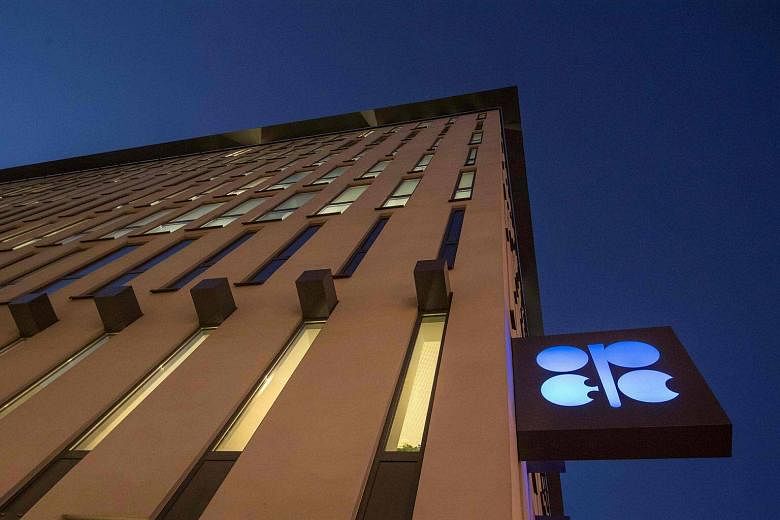WELLINGTON/HONG KONG (BLOOMBERG) - Crude oil surged to its highest level in 17 months on Monday (Dec 12) as an agreement among Opec and rival producers to curb output burnished the outlook for energy stocks and oil-linked currencies, while weighing on debt.
Oil in New York and London jumped more than 5 per cent after Saudi Arabia signaled it will cut output by more than was previously agreed amid a weekend deal to tackle oversupply with competitors such as Russia.
The US dollar fluctuated, gaining against the euro before an anticipated interest-rate hike from the Federal Reserve while succumbing to the Canadian dollar and Mexican peso. Asian energy stocks jumped with copper. Government bonds from Australia to America retreated with gold.
The oil deal has lit a fire under crude prices, exacerbating the pressure on bonds amid the implications for global price pressures. Strong US economic data and Donald Trump's election win have further stoked expectations the Fed will pull the trigger on Wednesday. The prospect of higher US borrowing costs by the end of 2016 is bolstering the dollar, while adding to a rout in government debt since the Nov 8 election.
"As a statement to the world, Opec has probably done all they could have possibly done," said Chris Weston, chief market strategist in Melbourne at IG Ltd. "This is a very powerful message that producers want to balance the market higher. This is about as bullish as it gets."
West Texas Intermediate crude gained 4.6 per cent as of 11:17am Tokyo time, climbing to US$53.85 a barrel as Brent added 4.3 per cent to US$56.65. Both are headed for their highest settlement prices since July last year.
Brent jumped as much as 6.6 per cent, touching US$57.89 as trading got going for the week.
The deal between Opec members and outside nations, including Russia, was agreed at a meeting in Vienna at the weekend. It should usher in the first global petroleum cuts in 15 years and covers about 60 per cent of the world's output.
Copper futures rallied as much as 1.4 per cent in New York, before paring gains.
Gold retreated with other haven assets, falling 0.1 per cent in the spot market to US$1,159.31 an ounce.
The MSCI Asia Pacific Index was down 0.2 per cent, even as energy shares surged 0.7 per cent.
The Nikkei 225 Stock Average jumped 0.7 per cent, erasing losses for the year, while Japan's Topix index added 0.1 per cent.
Singapore's Straits Times Index was down 0.5 per cent while the Kospi index in Seoul fell 0.1 per cent. Australia's S&P/ASX 200 Index was little changed after four days of gains. Hong Kong's Hang Seng Index slipped 0.6 per cent, while the Shanghai Composite Index dropped 0.8 per cent.
S&P 500 Index futures were little changed.
Banks and technology shares drove the S&P 500 to a 3.1 per cent climb last week, with the US benchmark reaching successive all-time highs as the Dow Jones Industrial Average also rose to records.
The Bloomberg Dollar Spot Index, which tracks the greenback against 10 major peers, slipped 0.1 per cent after gaining 0.5 per cent on Friday to finish the week higher.
The Korean won retreated for a second session, losing 0.4 per cent amid concern the political instability sparked by President Park Geun-hye's impeachment could hurt the economy.
Bonds Yields on Australian bonds due in a decade added four basis points, or 0.04 percentage point, to 2.85 per cent, while those on New Zealand debt added five basis points to 3.32 per cent.
Ten-year Treasury yields rose another two basis points to 2.49 per cent, after gaining eight basis points last week.

